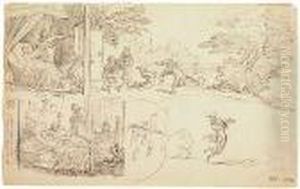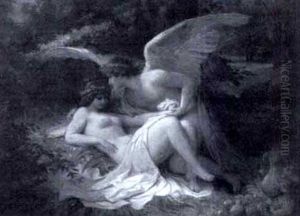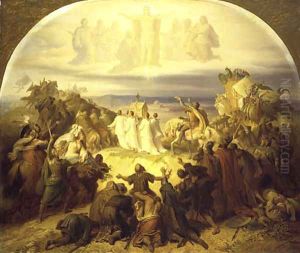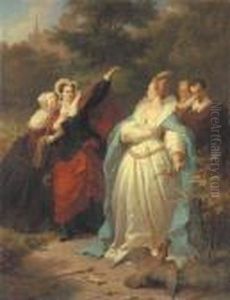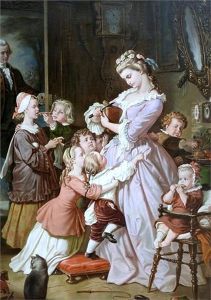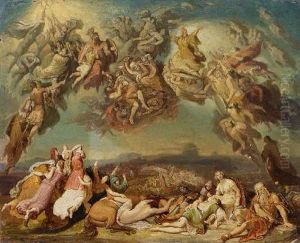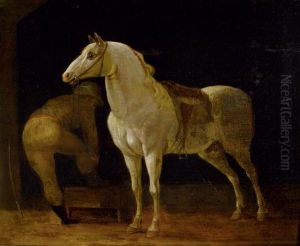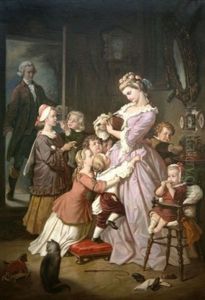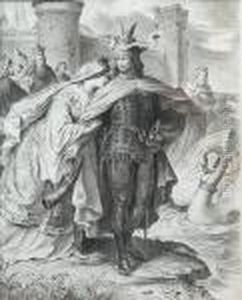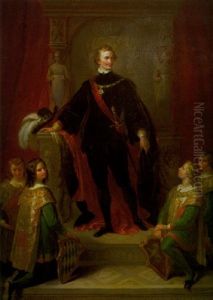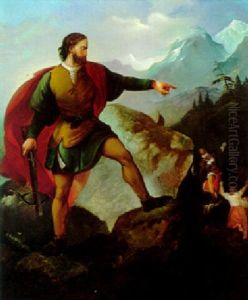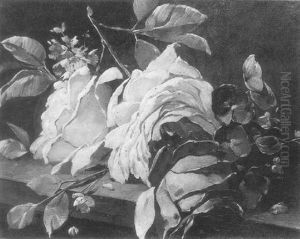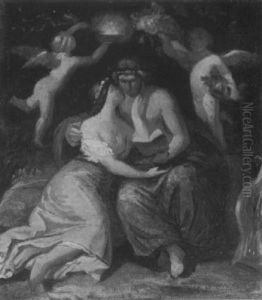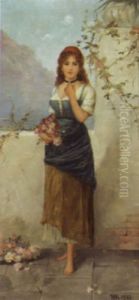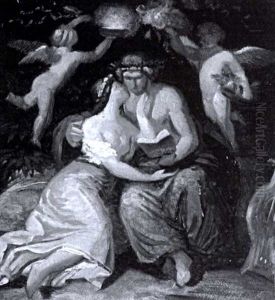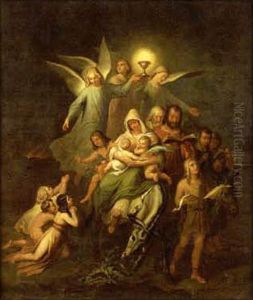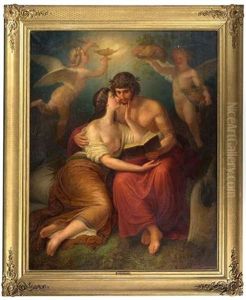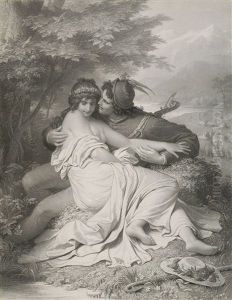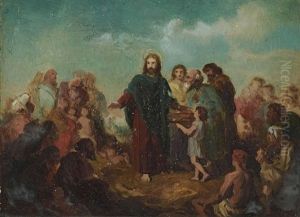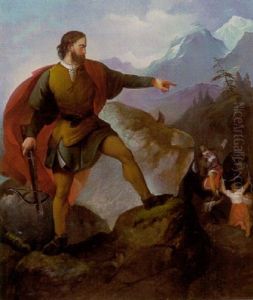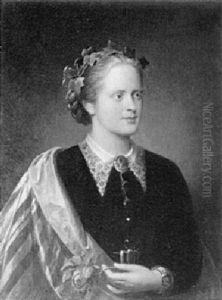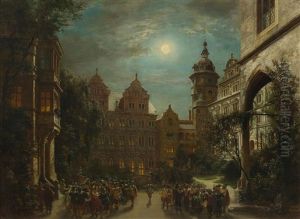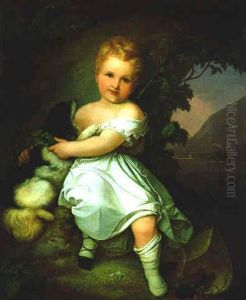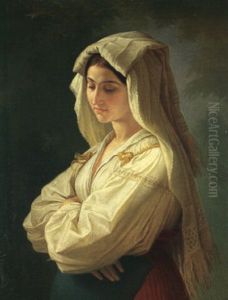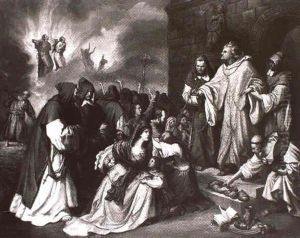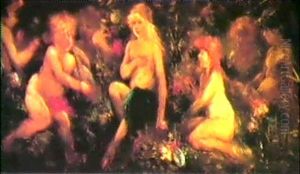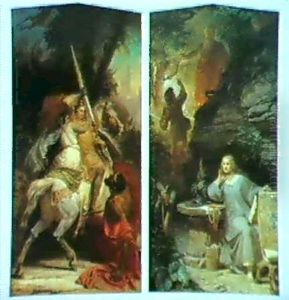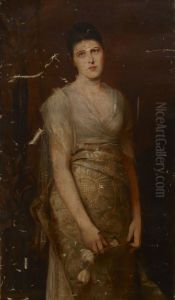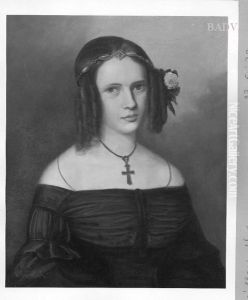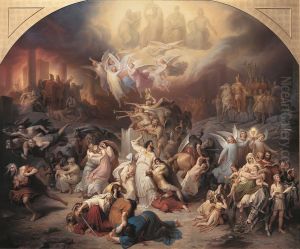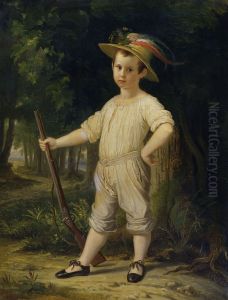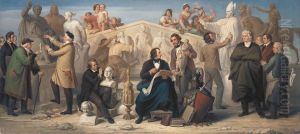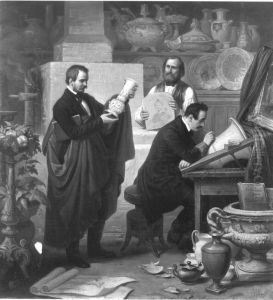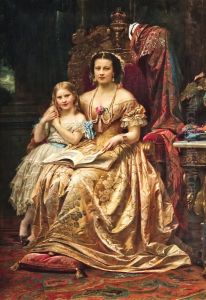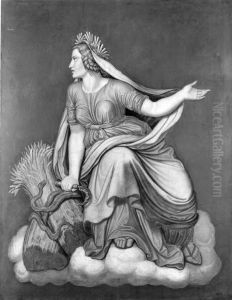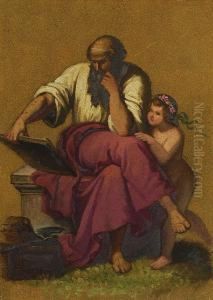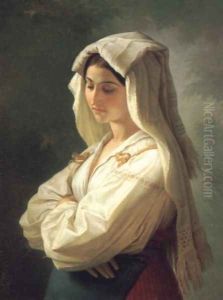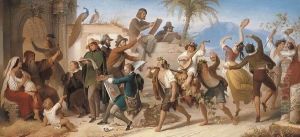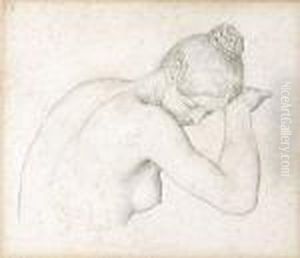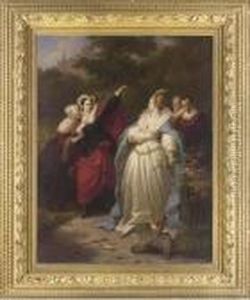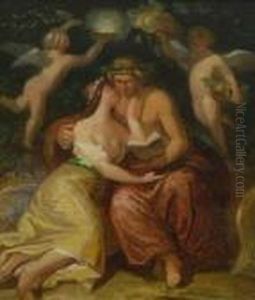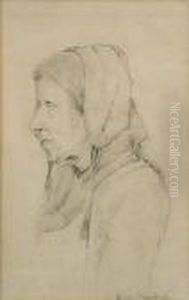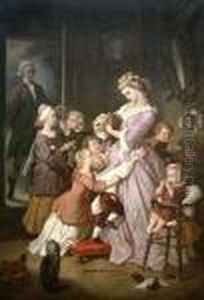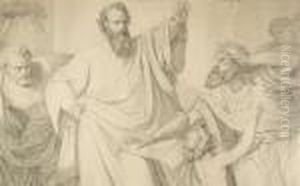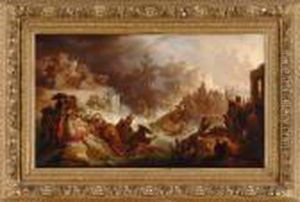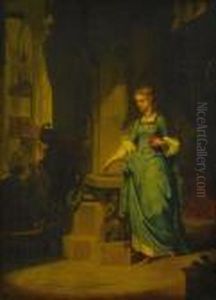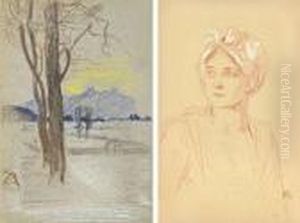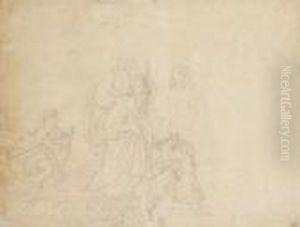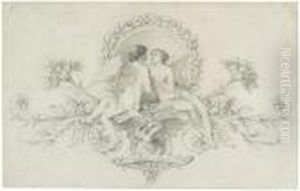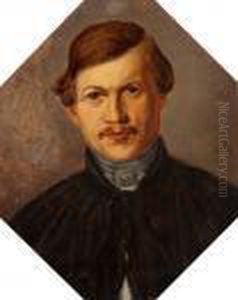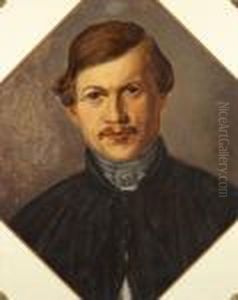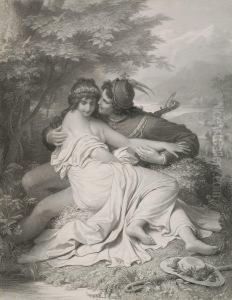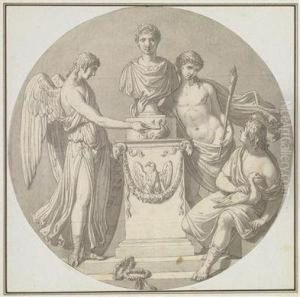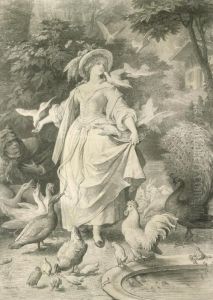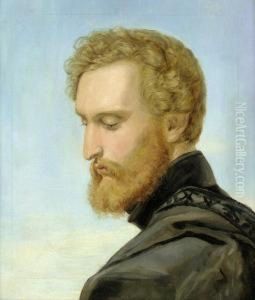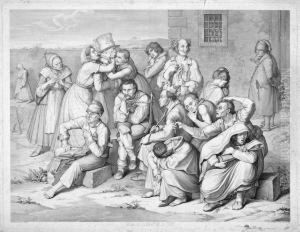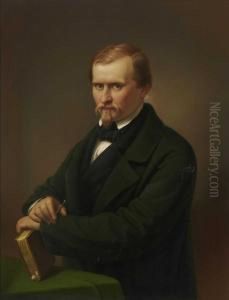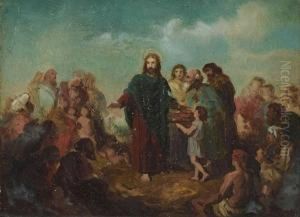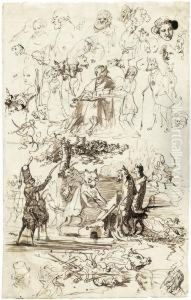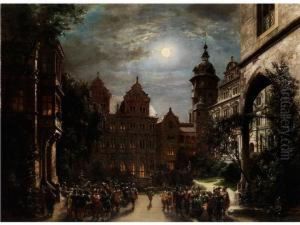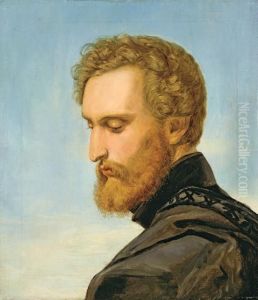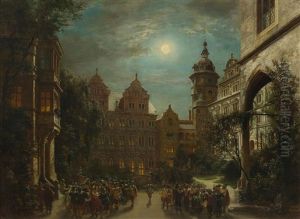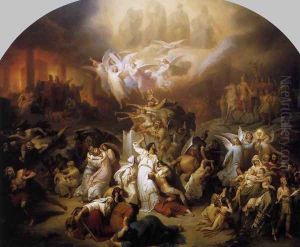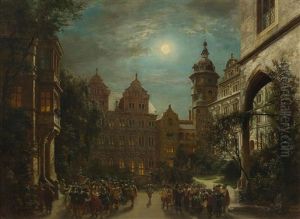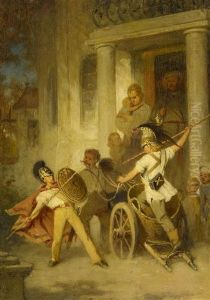Wilhelm von Kaulbach Paintings
Wilhelm von Kaulbach was a German painter, noted for his murals and history paintings. Born on October 15, 1805, in Arolsen, the capital of the small German principality of Waldeck, Kaulbach was initially taught by his father, who was also a painter. He later studied at the Düsseldorf Academy under Peter von Cornelius, who was a leading figure of the German Romantic and Nazarene movements. Under Cornelius's influence, Kaulbach developed a style characterized by a fusion of Romantic idealism with detailed historical accuracy.
In 1825, Kaulbach moved to Munich, which was at the time a vibrant artistic center, and continued his studies at the Munich Academy. His talent was soon recognized, and he received significant commissions for frescoes in the New Pinakothek and other public buildings in Munich. His works were characterized by grandiose compositions and were often imbued with a strong narrative and symbolic elements.
Kaulbach became one of the foremost history painters of his time. Among his most famous works are the frescoes in the Munich Residenz and the New Hermitage in Saint Petersburg. He also produced a series of large-scale paintings depicting epochs of human history, such as 'The Tower of Babel', 'The Destruction of Jerusalem', 'The Battle of the Huns', 'The Crusaders before Jerusalem', and 'The Age of the Reformation'.
His historical and often allegorical approach to art was very much in line with the tastes of his time, which favored grand, instructive tableaus that conveyed moral and historical lessons. However, with the advent of Realism and other artistic movements, Kaulbach's style fell out of favor, and his work was later criticized for its perceived lack of emotional depth and overemphasis on academic formalism.
Despite the eventual decline in his popularity, Wilhelm von Kaulbach made a significant impact on 19th-century German art. He served as the director of the Munich Academy for many years, and his influence extended to a new generation of artists. He died on April 7, 1874, in Munich, leaving behind a legacy that encapsulated the spirit of an era in German art. His works continue to be studied and appreciated for their historical value and their role in the development of German Romantic painting.
